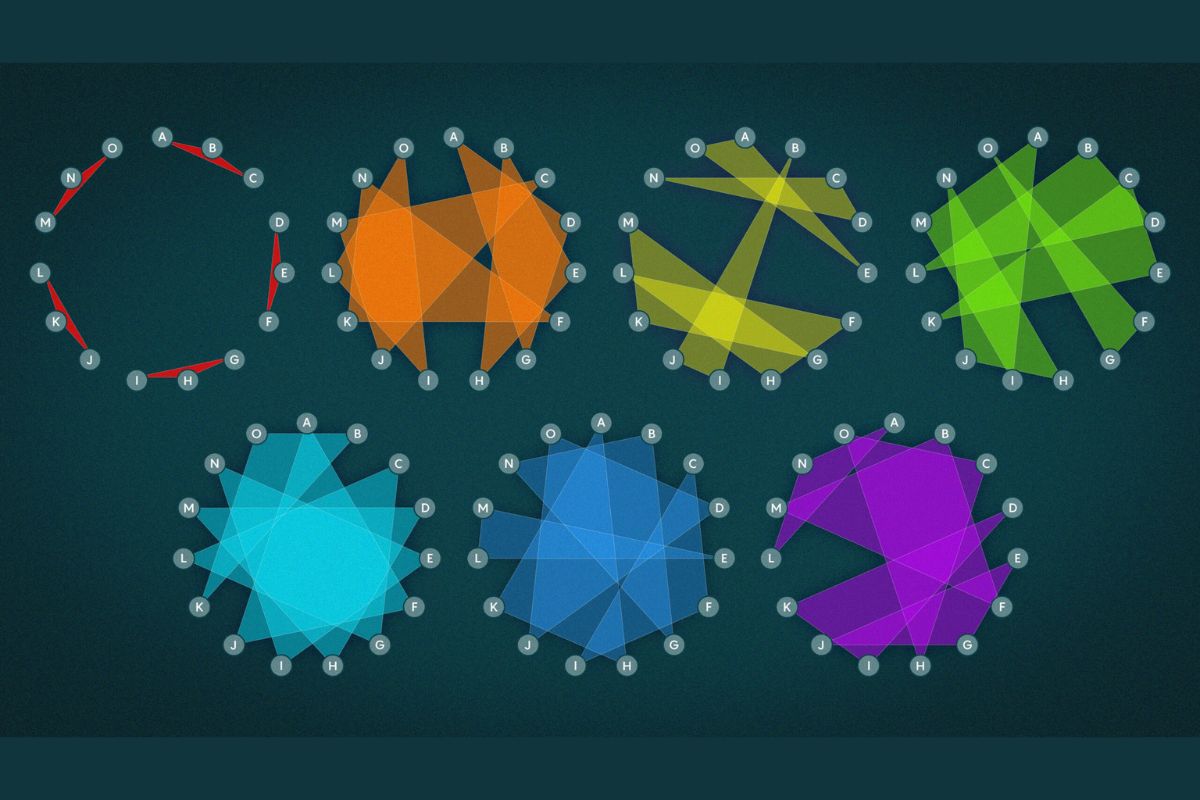
What is a hypergraph? A hypergraph is a generalization of a graph where edges can connect any number of vertices, not just two. Imagine a network where relationships aren't limited to pairs but can involve groups of any size. This concept finds applications in various fields like computer science, biology, and social network analysis. Understanding hypergraphs can help in solving complex problems involving multiple relationships and interactions. In this post, we will explore 32 fascinating facts about hypergraphs, shedding light on their structure, uses, and significance. Get ready to dive into the world of hypergraphs and discover their hidden potential!
What is a Hypergraph?
A hypergraph is a generalization of a graph where edges can connect any number of vertices, not just two. This concept is used in various fields like computer science, biology, and social networks.
- Hypergraphs consist of vertices and hyperedges, where each hyperedge can connect multiple vertices.
- Unlike traditional graphs, hypergraphs can model complex relationships involving more than two entities.
- Hypergraph theory extends graph theory by allowing edges to connect any number of nodes.
- Applications of hypergraphs include database theory, where they help model relationships between multiple tables.
- In biology, hypergraphs can represent complex interactions in biological networks, such as protein interactions.
History of Hypergraphs
The history of hypergraphs dates back to the early 20th century. Mathematicians sought to extend graph theory to more complex relationships.
- Erdős and Rényi, two famous mathematicians, contributed significantly to the development of hypergraph theory.
- The term "hypergraph" was first introduced by mathematician Claude Berge in the 1950s.
- Berge's book, "Graphs and Hypergraphs," published in 1973, is a seminal work in the field.
- Early research focused on combinatorial properties and applications in mathematics.
- Over time, hypergraph theory has found applications in computer science, particularly in database systems and algorithms.
Properties of Hypergraphs
Hypergraphs have unique properties that distinguish them from traditional graphs. These properties make them suitable for modeling complex systems.
- Hyperedges can connect any number of vertices, unlike edges in traditional graphs.
- The degree of a vertex in a hypergraph is the number of hyperedges that include it.
- Incidence matrices represent hypergraphs, where rows correspond to vertices and columns to hyperedges.
- Dual hypergraphs swap the roles of vertices and hyperedges, providing a different perspective on the same structure.
- Transversal hypergraphs consist of hyperedges that intersect all hyperedges of the original hypergraph.
Applications in Computer Science
Hypergraphs are widely used in computer science for various applications, from database theory to machine learning.
- Database theory uses hypergraphs to model relationships between multiple tables.
- In machine learning, hypergraphs can represent complex relationships between features.
- Hypergraph partitioning is a technique used in parallel computing to distribute tasks efficiently.
- Social network analysis uses hypergraphs to model group interactions and community structures.
- VLSI design employs hypergraphs to optimize circuit layouts and minimize connections.
Hypergraphs in Biology
Biological systems often involve complex interactions that can be effectively modeled using hypergraphs.
- Protein interaction networks use hypergraphs to represent interactions between multiple proteins.
- Metabolic networks can be modeled as hypergraphs, where hyperedges represent biochemical reactions.
- Gene regulatory networks use hypergraphs to capture the complex relationships between genes and regulatory elements.
- Ecological networks can be represented as hypergraphs, showing interactions between species and their environment.
- Neural networks in the brain can be modeled using hypergraphs to represent connections between neurons.
Challenges and Future Directions
Despite their usefulness, hypergraphs present several challenges that researchers are working to address.
- Computational complexity is a significant challenge in working with hypergraphs, especially for large datasets.
- Visualization of hypergraphs is more complex than traditional graphs, requiring advanced techniques.
- Algorithm development for hypergraphs is an ongoing area of research, with many open problems.
- Scalability is crucial for applications in big data, where hypergraphs can become very large.
- Interdisciplinary research is essential for advancing hypergraph theory and its applications in various fields.
Interesting Facts
Here are some additional interesting facts about hypergraphs that highlight their versatility and importance.
- Hypergraph coloring is a generalization of graph coloring, where the goal is to color vertices so that no hyperedge is monochromatic.
- Hypergraph isomorphism is a challenging problem, involving determining if two hypergraphs are structurally identical.
Hypergraphs: A Quick Recap
Hypergraphs are fascinating structures that extend beyond traditional graphs. They allow connections between multiple nodes, making them super useful in complex data analysis, network theory, and computer science. Unlike regular graphs, hypergraphs can link more than two nodes in a single edge, offering a richer way to model relationships.
These structures are used in various fields like biology, where they help map out complex interactions in ecosystems, and in social networks, where they can represent group dynamics more accurately. They also play a role in database theory, helping to optimize queries and data storage.
Understanding hypergraphs can open up new ways to solve problems that are too complex for simple graphs. Whether you’re a student, a researcher, or just curious, knowing about hypergraphs can give you a fresh perspective on how to analyze and interpret data.
Was this page helpful?
Our commitment to delivering trustworthy and engaging content is at the heart of what we do. Each fact on our site is contributed by real users like you, bringing a wealth of diverse insights and information. To ensure the highest standards of accuracy and reliability, our dedicated editors meticulously review each submission. This process guarantees that the facts we share are not only fascinating but also credible. Trust in our commitment to quality and authenticity as you explore and learn with us.
